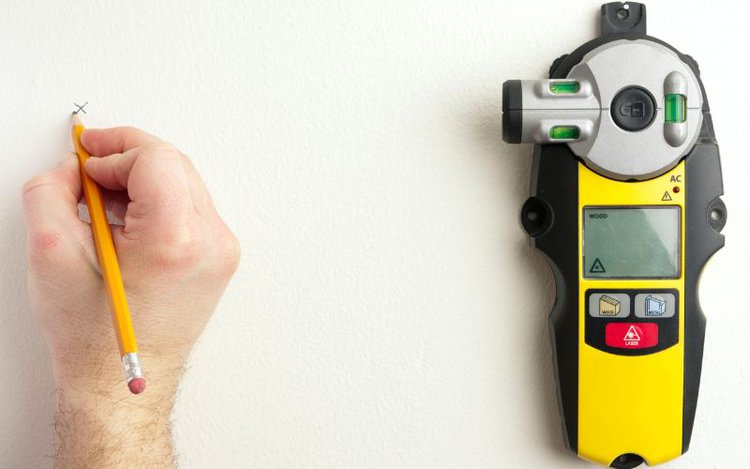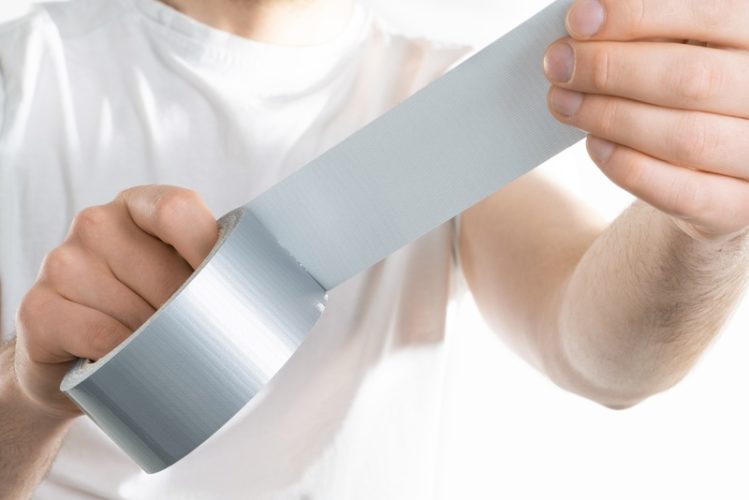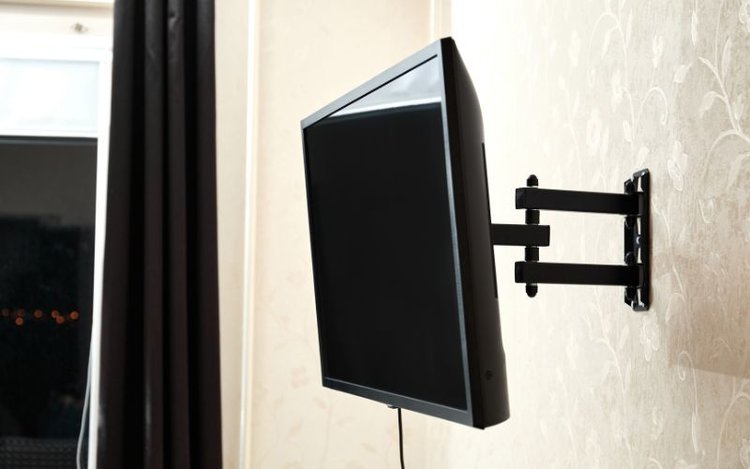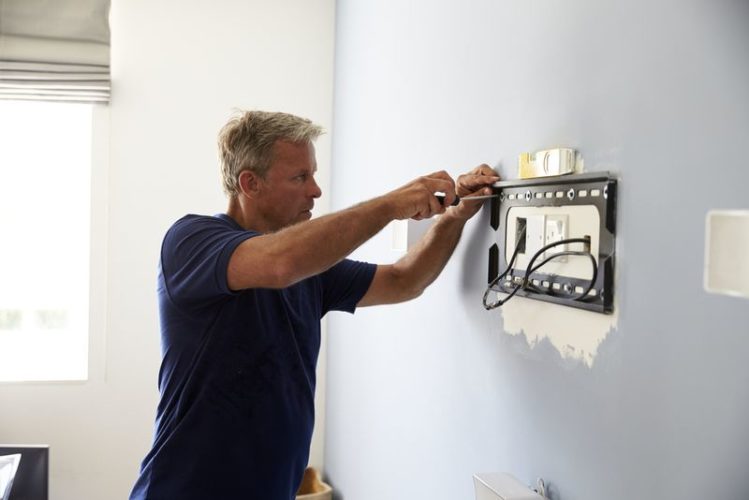Does Mounting a TV Damage The Wall?

What To Know
- Mounting a TV on the wall typically requires drilling holes that can affect the wall and studs, although there are less popular alternatives that do not require drilling.
- Wall studs can support the weight of a TV but may weaken over time, especially if they are already damaged or overburdened.
- Alternative no-drill mounting options like no-stud mounts and strong adhesive tapes exist but carry risks and limitations, especially for heavier TVs.
When setting up a new TV, users’ common dilemma is deciding how to mount the TV. However, wall mounting is one of the most popular choices among TV users.
Are you finding it hard to look past the possibility of damaging your walls with a wall mount? Well, your concern is valid!
Mounting a TV on your wall will certainly affect it because it often requires that you drill holes in the wall. A few alternatives don’t require drilling holes, but they are not as popular.
What if you don’t want to drill holes into your wall? What are your options? In this article, we’ll discuss the problems associated with wall mounting and tell you how to pull it off safely.
Quick Navigation
Does Mounting a TV Damage Studs?
No, it doesn’t. However, over time, it can contribute to factors that weaken the wall studs.
Wall studs are vertical (2 × 4″) wooden structures inside a wall. They are installed to support the house’s frame and accommodate screws or nails better than the wall materials (like drywall or plaster).

Drywall or plaster can disintegrate when you drill too many holes in one section and put heavy loads on them. Any drilling for the purpose of load-bearing is best done on the studs instead.
Studs provide structural support to the walls and can carry materials up to 100 pounds. Most wall-mounted devices do not weigh up to that, so a well-installed stud in its best form can safely accommodate your TV.
However, certain factors can damage wall studs. Apart from aging, which causes studs to lose strength and capacity, the weight can weaken the studs in your apartment from carrying loads over the years.
The stud might be cracked or full of too many holes from times when you drilled in the wrong spots. Mounting a TV on studs in this state can risk further damage to the stud and your TV.
To preserve the integrity of wall studs, you must drill precisely into them. However, they are installed inside the wall, so locating them can be quite challenging.
People have introduced several simple methods of locating studs over time. You can also use stud locators like the magnet stud finder and electronic stud finder , which you can find in your local hardware store or an online marketplace.

Can You Mount a TV Without Damaging the Wall?
Are you looking for ways to mount your TV without damaging the wall? The most straightforward answer would be to use a TV stand and keep the drill away from your wall.
However, if space is something you are particular about, this section is for you. We’ll explore some wall-mount options that are kinder to your walls.
1. No-Stud Wall Mount
These aluminum wall mounts have a row of small nail holes along their top edge. You attach them to the wall with tiny screws or nails that do not do as much damage as regular screws.
No-Stud wall mounts come with a second frame which you secure to the mount holes on the back of your TV. You mount the TV by interlocking both frames.
These wall mounts are quite sturdy and can support TVs weighing up to 80 pounds. They spread the weight of the load they carry over a wider surface area.
2. Adhesive Tapes

You can also use adhesive tapes modified to carry the weight of heavier objects. These tapes are double-sided; one side goes onto the wall, and the other holds the TV in place.
Adhesive tapes are more popular with paintings and other light installations than TVs. However, some of the strong adhesive tapes in the market can bear the weight of small TVs and monitors.
While this sounds nice, adhesive tapes can lose their glue strength over time due to too much heat or moisture. When this happens, there’s a chance your TV will fall off the wall.
Is It Better To Wall Mount a TV or Put It on a Stand?
Wall mounts and TV stands are both excellent options for mounting your TV. They each have their advantages; the better choice depends on your preference and the structural capacity of your space.
In this section, we’ll compare both options based on a few factors.
1. Appearance
A wall mount will help you save space if you have a small apartment. It will also help you avoid extra furniture if you prefer an uncluttered or minimalist design.

TV stands take up more space. However, they come in various attractive shapes and designs that can lend an artistic touch to your space.
2. Ease of Installation
Wall mounts and TV brackets take some effort to install. First, you have to figure out your TV’s VESA size and buy matching brackets. Next, you must install them firmly, ensuring they won’t come off the wall.

TV stands, on the other hand, are very convenient and uncomplicated. They are easier to set up than wall mounts.
3. Accessibility
A TV stand makes it easier for you to access wires, connection ports, and wall sockets. This is an essential factor to consider if you will be plugging and unplugging different connector cables into the TV.
A wall-mounted TV is often very close to the wall, and it’s harder to access the connectivity ports located on its back.
4. Mobility
TV stands also provide mobility. If you need to change the position of your TV during a redecoration, you can easily move the stand to your desired position.
To accomplish this with a wall-mounted TV, You would have to unscrew the TV mount from the wall and drill new holes into the new position.

Apart from the stress of undoing and redoing the screws, you’re also stuck with unwanted holes in your wall afterward. To keep the wall tidy, you’ll need to fill the holes and repaint that area.
NOTE: Wall mounts are great if you have strong walls and don’t mind a little stress. However, TV stands are a more convenient option. TV stands are your best option if you live in a rental where your tenancy agreement does not permit drilling holes in the wall.
Conclusion
There are different types of TV mounts. We have ceiling mounts, wall mounts, and TV stands. Wall mounts are quite popular among TV users, but they can cause damage to your walls.
Most wall mounts require that you drill holes into the wall or studs. The TV’s weight and multiple drilled holes can cause the studs to weaken over time.
There are alternative ways to mount your TV on a wall without drilling holes. You can try the no-stud mounts or the adhesive tapes mentioned in the article if you’re feeling brave. Good luck!
Gabriella ‘Diogo is a technical writer with a vested interest in tech hardware and equipment. She shares her knowledge and processes in an easy-to-grasp, lighthearted style. When she’s not testing or researching device performance, you’ll find her writing short stories or rewatching episodes of her favorite sitcoms.


